Discover our
Home for Learning
- Contact
- 412-624-8020
- [email protected]
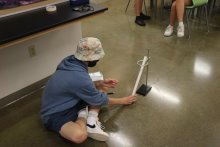

A marble comes barreling down the ramp and across the floor of the Middle School hallway. While one Falk Lab School eighth-grader goes to retrieve the marble, another reads off a number to a third group member, who writes it down.
Similar scenes are unfolding inside Eileen Coughlin’s science class, where students are creating their own marble runs, standing by with stopwatches ready, and recording data.
The sight and sound of speeding marbles create such a fun, high-energy atmosphere that it would be easy to miss the fundamental science lessons that students are absorbing as they fine-tune their marble runs. Along with creating the devices, students must devise a method of measuring those speeds accurately, agreeing on everything from designing tables to record their data to deciding what calculations they’ll need to make to produce numbers like average speed.
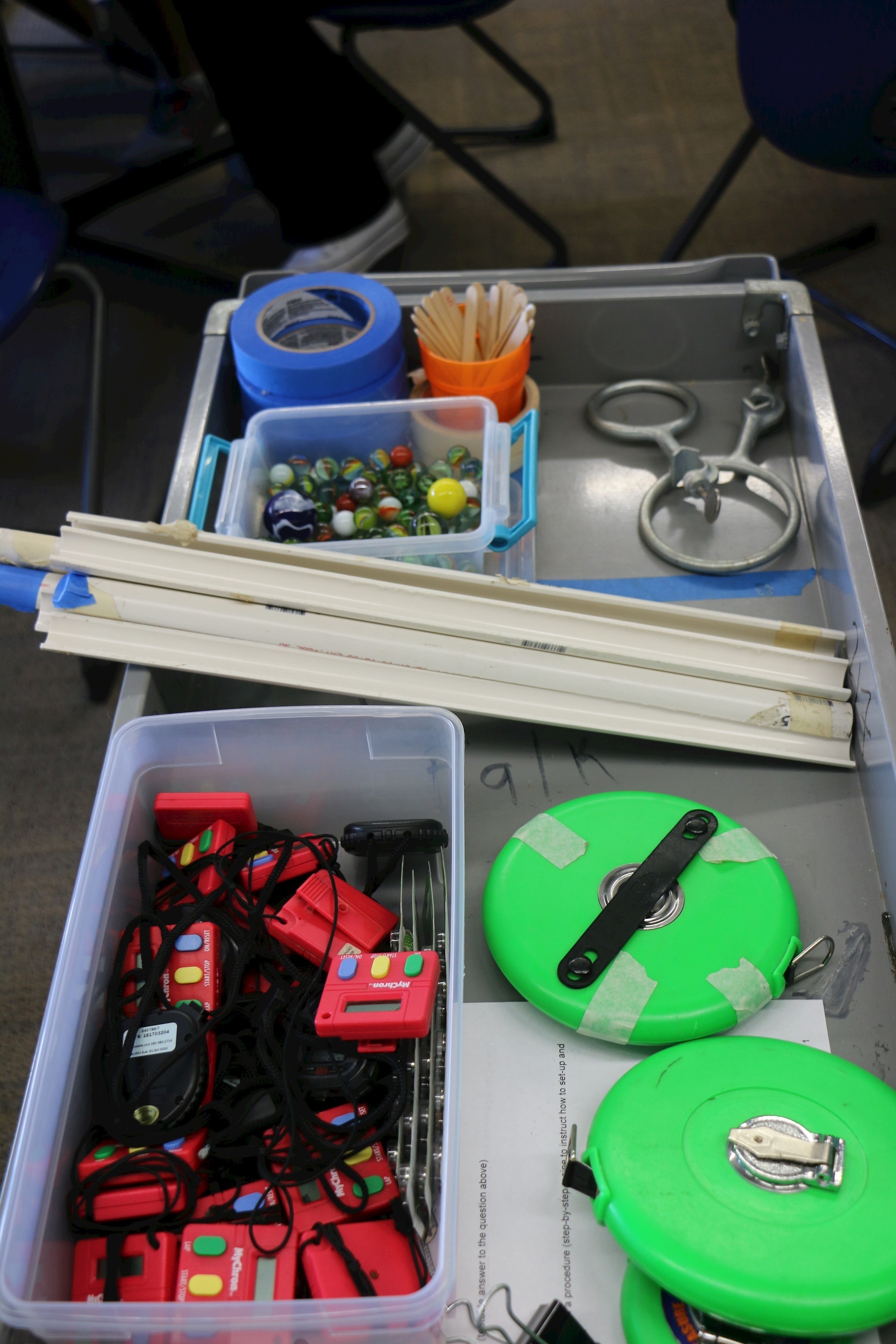
And once they’ve finished with all that, they’ll have to write instructions that can be understood and followed faithfully by another group, which will use those instructions to try to replicate the group’s results.
“The philosophy is that we want the kids to do the science and figure things out on their own through experimentation and simulation so that we’re not just feeding them facts,” says Eileen Coughlin, Middle School science teacher and co-chair of Falk Lab School’s Science Curriculum Committee.
That philosophy guides science instruction at Falk Middle School, where Coughlin and her fellow science teacher, Alex Dragon, give students as many opportunities as possible to “do science.”
Finding Creative Ways to Implement Science Standards
Science instruction at Falk Lab School follows the Next Generation Science Standards (NGSS), which emphasize three dimensions of science learning: practices, cross-cutting concepts, and disciplinary core ideas.
Coughlin and Dragon adhere to these standards while also exercising the flexibility and creativity to adapt lessons to students’ interests, as is true of teachers across Falk Lab School.
“Although we don’t follow the standards strictly like some public schools,” says Coughlin, “what we do here all aligns.”
For example, both Coughlin and Dragon incorporate the NGSS’s cross-cutting concepts into lessons whenever possible. These concepts, which have application across all domains of science, include cause and effect; energy and matter; and stability and change; among others.
“Regardless of the actual content we’re trying to convey,” says Dragon, “there’s always time to work in some of the cross-cutting concepts and big-picture ideas that show up in all types of science, that you can tie back to, like structure and function, systems, or finding patterns.”
Along with helping work in aspects of the NGSS, Dragon’s creativity is key for engaging students.
“Any time that I can, I like to start off a topic with something that makes students curious or gets them engaged,” he adds, “whether it’s a demonstration of a phenomenon, or a shared experience that you can tie back into when you explain the content and go into more depth. I can say, ‘We all observed this unexpected thing happen—now you have the tools to explain why it happened.’”
What Can We Learn from Dropping Eggs?
The NGSS standards also include practices such as engineering and design thinking, both of which are on full display in another of Coughlin’s units, the egg drop challenge.
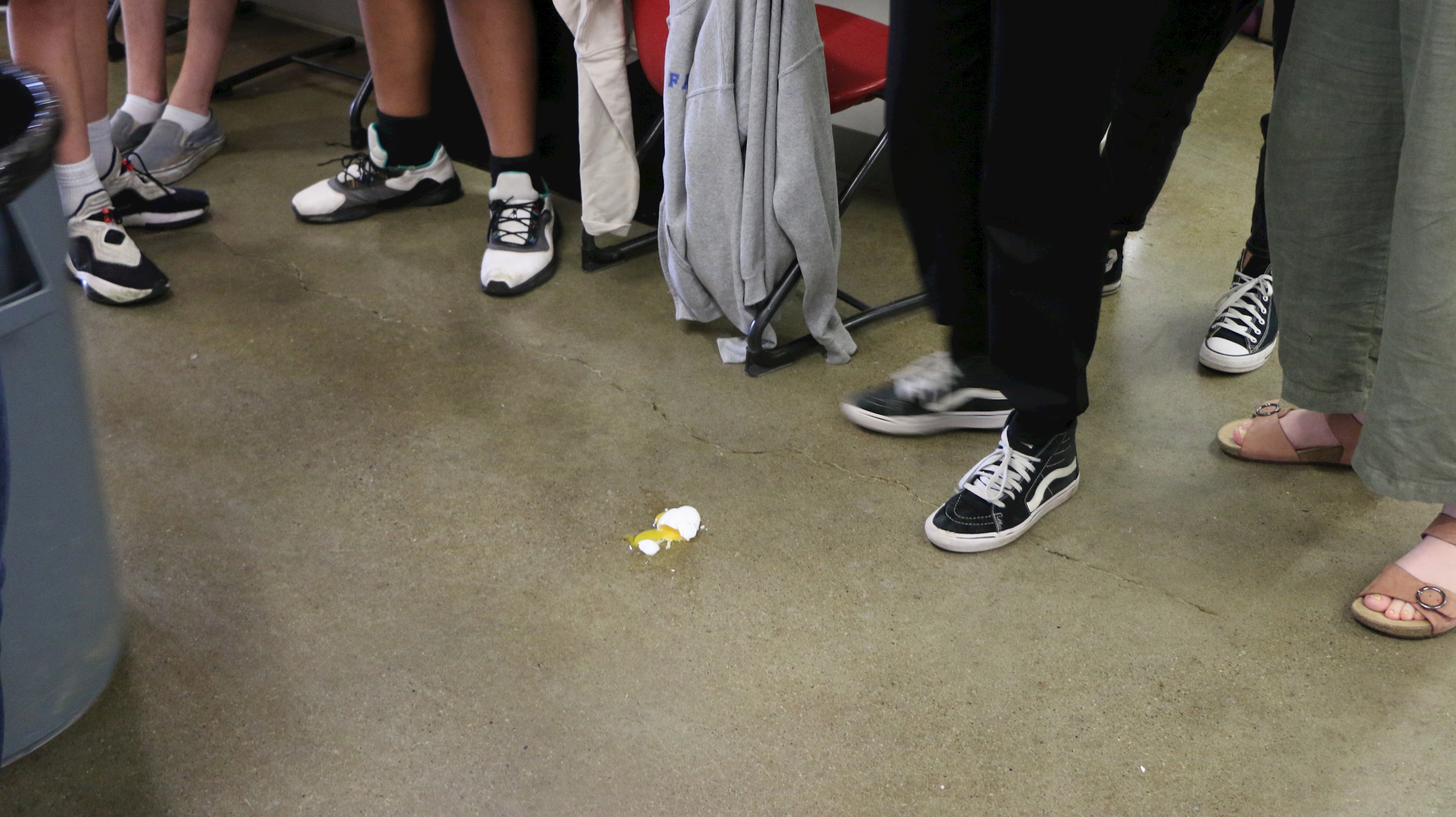 Using readily available tools like toilet-paper rolls, tape, popsicle sticks, yarn, and bubble wrap, students must devise a way to drop an egg without cracking it. As long as the students’ eggs remain intact, the height from which they drop the egg keeps increasing, with some students standing on ladders or even reaching out windows to test their egg-protecting contraptions.
Using readily available tools like toilet-paper rolls, tape, popsicle sticks, yarn, and bubble wrap, students must devise a way to drop an egg without cracking it. As long as the students’ eggs remain intact, the height from which they drop the egg keeps increasing, with some students standing on ladders or even reaching out windows to test their egg-protecting contraptions.
As with the marble run challenge, a lot of important scientific skills are hidden in the thrill of watching to see if an egg cracks on the floor of the Middle School hallway. Coughlin’s students fill out worksheets that include pre–egg drop tasks like brainstorming and diagramming their devices, followed by post-build reflections on how well the device matches their plans. Once students start dropping eggs, there’s data to collect. And when the last eggs have been dropped, students must consider questions like “What material(s) helped your device design the most? Explain” and “What did you notice about the devices in your class period that survived the drops? List at least 3 observations.”
An important feature of the challenge is that Coughlin repeats it three times per year, giving students hands-on familiarity with the important concept of iterative design. It’s one more way of letting students do science.
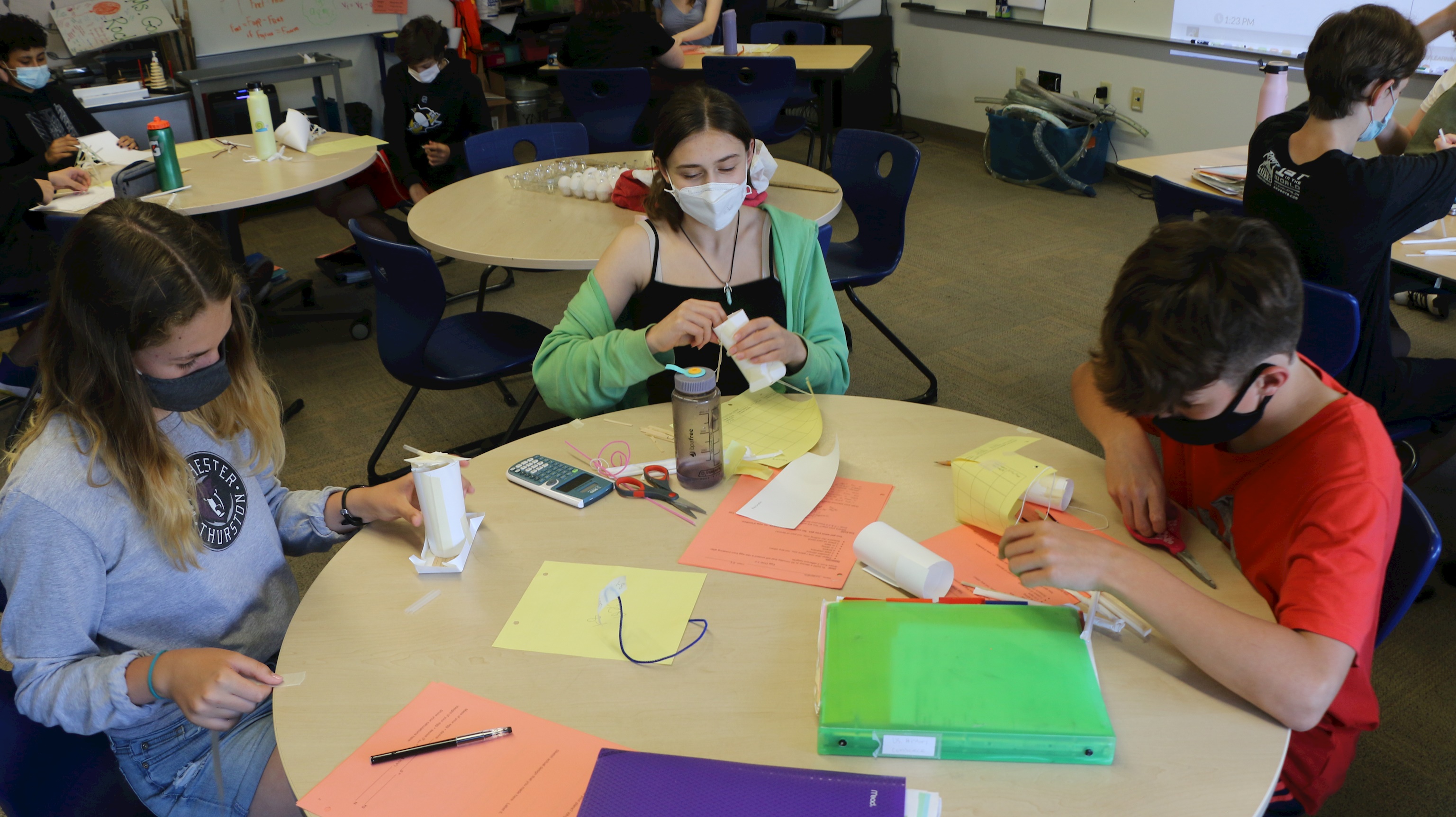 The Importance of Observation
The Importance of Observation
Filling out worksheets is an important way to hone students’ powers of observation, a skill both Dragon and Coughlin emphasize.
“The power of observation is so important,” says Coughlin. “Noting the details behind their observations. And just being critical across the board, not just in science but being critical all the time, toward what you’re reading and observing.”
For Dragon, observation is linked to the creativity he brings to the classroom.
“I talk about how observational skills are really important for scientists, but also for artists,” he says. “The more you look at something in detail, the more you notice, and the more you learn about something from a scientific perspective, the more you can make sense of what you’re actually seeing.”
Writing in the Sciences
One of the key foundational skills students are practicing with the marble run project, says Coughlin, is writing clearly. Scientific writing is a special skill that requires clarity and precision, and students practice this skill throughout their time at Falk Middle School.
“We make sure they’re exposed to writing with a scientific tone,” says Dragon. “We start them off with a template so they have a lot of scaffolding, then work up to a point where in eighth grade, Ms. Coughlin has lab reports with sections and they’re responsible for putting the right information in there.”
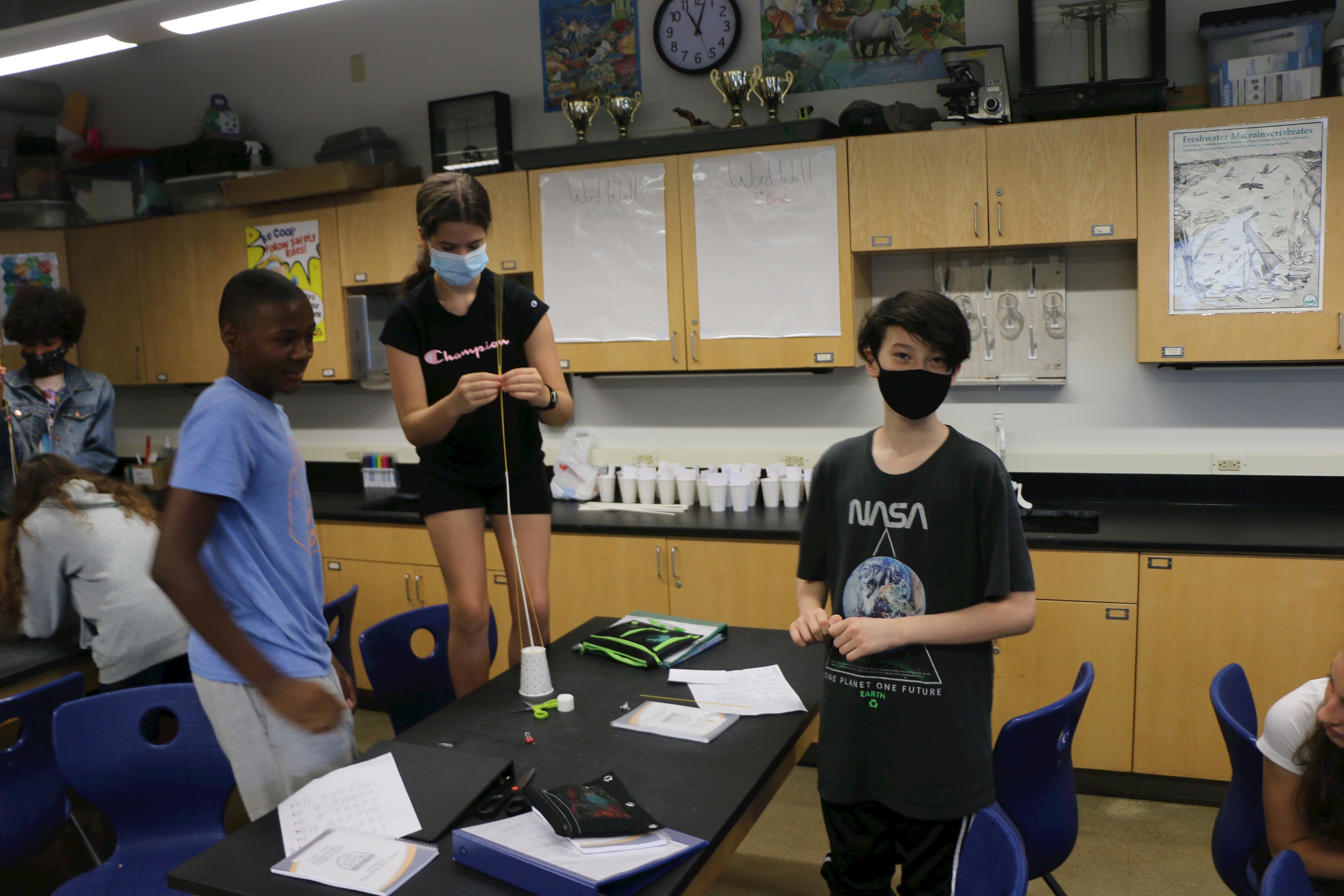 “We try to repeat it every year because writing is one of those life skills where, whether you go into research or any scientific career, you’re going to have to write and communicate with other people,” says Coughlin.
“We try to repeat it every year because writing is one of those life skills where, whether you go into research or any scientific career, you’re going to have to write and communicate with other people,” says Coughlin.
One of the greatest points of pride for Falk Middle School science, says Coughlin, is that Falk alumni have a reputation for writing strong lab reports.
“Falk students who go on to other places, their lab reports are used as examples,” she says. “They’ve got that rep. Our kids come out of here with good science skills for high school transitions.”
Putting It All Together
One of the culminating experiences of a Falk Middle School science education in recent years has been working in teams in Coughlin’s class to create a functioning roller coaster. The project brings together a number of concepts eighth-grade students have been working on over the year, while also requiring some heavy-duty engineering skills—and power tools.
Like the marble run, the rollercoaster project is fun, collaborative, and full of scientific concepts.
“They have to measure different concepts that are happening,” Coughlin says. “They’re measuring variables like speed, mechanical advantage and trying to measure force.”
It’s also a far longer and more ambitious project than others that students have done, requiring them to formulate plans they can execute over a period of months: typically Coughlin introduces the rollercoaster challenge in November, and students work on it week by week over the rest of the school year.
“It’s one of those projects where, when former students come back, they ask, ‘Do you still do that?’” she says.
For all its creativity and fun, the rollercoaster project does more than introduce students to cross-cutting concepts like design thinking, writing, or group work. It satisfies Coughlin and Dragon’s most fundamental goal for science at Falk Middle School:
“We want them to do what real scientists do,” says Coughlin. “We want them to do science.”
